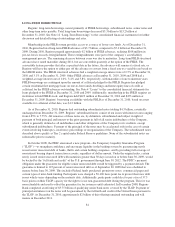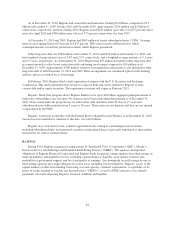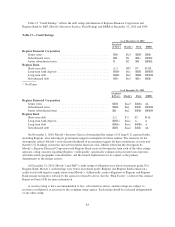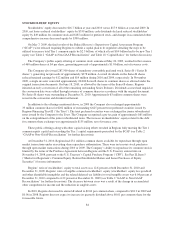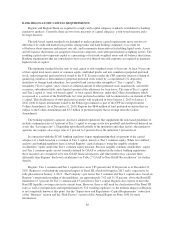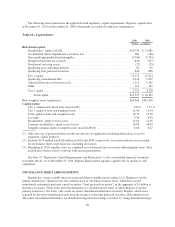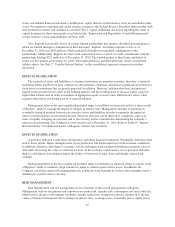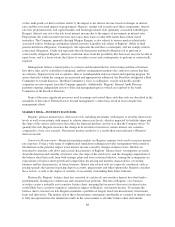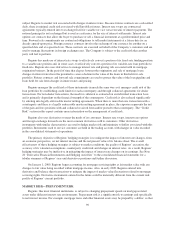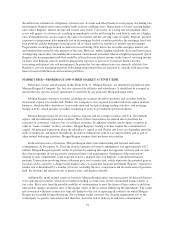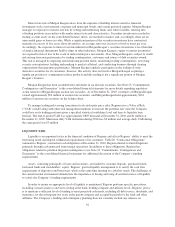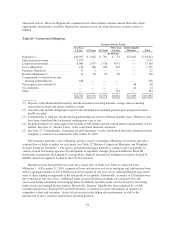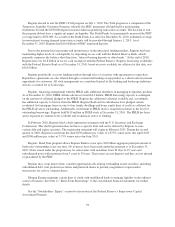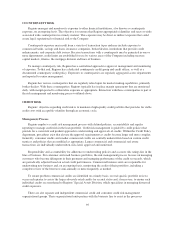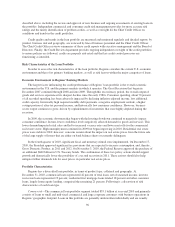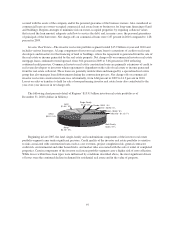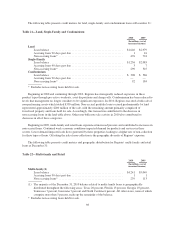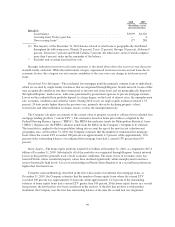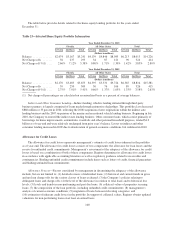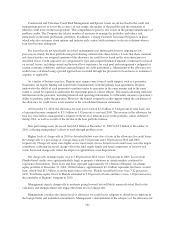Regions Bank 2010 Annual Report Download - page 105
Download and view the complete annual report
Please find page 105 of the 2010 Regions Bank annual report below. You can navigate through the pages in the report by either clicking on the pages listed below, or by using the keyword search tool below to find specific information within the annual report.the debtor may refinance its obligations at lower rates. As loans and other financial assets prepay in a falling rate
environment, Regions must reinvest these funds in lower-yielding assets. Prepayments of assets carrying higher
rates reduce Regions’ interest income and overall asset yields. Conversely, in a rising rate environment, these
assets will prepay at a slower rate, resulting in opportunity cost by not having the cash flow to reinvest at higher
rates. Prepayment risk can also impact the value of securities and the carrying value of equity. Regions’ greatest
exposures to prepayment risks primarily rest in its mortgage-backed securities portfolio, the mortgage fixed-rate
loan portfolio and the mortgage servicing asset, all of which tend to be sensitive to interest rate movements.
Prepayments on mortgage-backed securities increased during 2010 due to the favorable mortgage interest rate
environment that existed for the majority of the year. However, tighter lending standards, decreased home prices,
and lingering uncertainty surrounding the economic environment restrained otherwise higher prepayment speeds.
Regions also has prepayment risk that would be reflected in non-interest income in the form of servicing income
on loans sold. Regions actively monitors prepayment exposure as part of its overall net interest income
forecasting and interest rate risk management. In particular, because interest rates are currently relatively low,
Regions is actively managing exposure to declining prepayments that are expected to coincide with increasing
interest rates in both the loan and securities portfolios.
MARKET RISK—BROKERAGE AND OTHER MARKET ACTIVITY RISK
References below, and elsewhere in this Form 10-K, to “Morgan Keegan” are intended to include not only
Morgan Keegan & Company, Inc. but also certain of its affiliates and subsidiaries. It should not be assumed or
infered that any specific activity mentioned is carried on by any particular Morgan Keegan entity.
Morgan Keegan’s business activities, including its securities inventory positions and securities held for
investment, expose it to market risk. Further, the Company is also exposed to market risk in its capital markets
business, which includes derivatives, loan syndication and foreign exchange trading activities, and mortgage
trading activity, which includes secondary marketing of loans to government-sponsored entities.
Morgan Keegan trades for its own account in corporate and tax-exempt securities and U.S. Government
agency and Government-sponsored securities. Most of these transactions are entered into to facilitate the
execution of customers’ orders to buy or sell these securities. In addition, it trades certain equity securities in
order to “make a market” in these securities. Morgan Keegan’s trading activities require the commitment of
capital. All principal transactions place the subsidiary’s capital at risk. Profits and losses are dependent upon the
skills of employees and market fluctuations. In order to mitigate the risks of carrying inventory and as part of
other normal brokerage activities, Morgan Keegan assumes short positions on securities.
In the normal course of business, Morgan Keegan enters into underwriting and forward and future
commitments. At December 31, 2010, the notional amount of forward commitments was approximately $312
million. Morgan Keegan typically settles its position by entering into equal but opposite contracts and, as such,
the contract amounts do not necessarily represent future cash requirements. Settlement of the transactions
relating to such commitments is not expected to have a material effect on Regions’ consolidated financial
position. Transactions involving future settlement give rise to market risk, which represents the potential gain or
loss that can be caused by a change in the market value of a particular financial instrument. Regions’ exposure to
market risk is determined by a number of factors, including the size, composition and diversification of positions
held, the absolute and relative levels of interest rates, and market volatility.
Additionally, in the normal course of business, Morgan Keegan enters into transactions for delayed delivery,
to-be-announced securities, which are recorded in trading account assets on the consolidated balance sheets at
fair value. Risks arise from the possible inability of counterparties to meet the terms of their contracts and from
unfavorable changes in interest rates or the market values of the securities underlying the instruments. The credit
risk associated with these contracts is typically limited to the cost of replacing all contracts on which Morgan
Keegan has recorded an unrealized gain. For exchange-traded contracts, the clearing organization acts as the
counterparty to specific transactions and, therefore, bears the risk of delivery to and from counterparties.
91


